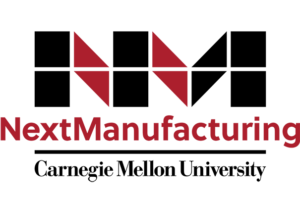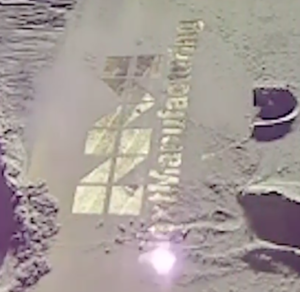NASA’s investment helps improve 3D metal printing for aviation
NASA, as part of its Aeronautics Research Mission Directorate (ARMD), selected three university-led teams last month to explore new ways to build and power the aircraft of the future. Colorado School of Mines and ADAPT are part of a team led by the NextManufacturing Center at Carnegie Mellon University (CMU) to explore new ways to use additive manufacturing to reduce costs and increase the speed of mass-producing aircraft without sacrificing quality, reliability, and safety.
This is the second year NASA has asked the academic world to help it achieve its strategic goals through the University Leadership Initiative (ULI). The three teams (including groups from University of Wisconsin–Madison and University of Illinois at Urbana-Champaign), will receive about $15 million over three years. Almost $7 million of that will go to the team led by NextManufacturing.
 The ULI was created to initiate a new type of interaction between ARMD and the university community, where U.S. universities take the lead, build their own teams, and set their own research paths. This initiative seeks new, innovative ideas that can support the NASA ARMD portfolio and the U.S. aviation community.
The ULI was created to initiate a new type of interaction between ARMD and the university community, where U.S. universities take the lead, build their own teams, and set their own research paths. This initiative seeks new, innovative ideas that can support the NASA ARMD portfolio and the U.S. aviation community.
The NextManufacturing-led project, Development of an Additive Manufacturing Ecosystem for Qualification of Additive Manufacturing Processes and Materials in Aviation, is led by Dr. Anthony Rollett, with a number of co-investigators from CMU, Colorado School of Mines, Case Western Reserve University, University of Pittsburgh, University of Texas at El Paso, Worcester Polytechnic Institute, The Barnes Group, and Materials Resources LLC. Other partners will include the Air Force Research Laboratory’s Materials and Manufacturing Directorate, Argonne National Laboratory, ANSYS, Lockheed Martin, Trumpf, Eaton, General Electric, Pratt & Whitney, Northrop Grumman, Materials Solutions, Metal Powder Works, and Siemens.
The project will focus on process qualification for laser powder bed fusion 3D printing. The aim is to lower the cost of manufacturing, especially for short-run production and replacement parts, and to encourage economic growth by enabling small contractors to qualify their AM processes and equipment.
 Mines/ADAPT researchers, including Drs. Owen Hildreth, Branden Kappes, Aaron Stebner, Craig Brice, and Behnam Amin-Ahmadi, will work with ADAPT member company Citrine Informatics to use machine learning to characterize and qualify additively manufactured parts and to help overcome the challenge of creating a scientifically sound basis for qualifying 3D printed parts. This is an important step toward demonstrating how to design and use facilities for efficient, large-scale production of these parts.
Mines/ADAPT researchers, including Drs. Owen Hildreth, Branden Kappes, Aaron Stebner, Craig Brice, and Behnam Amin-Ahmadi, will work with ADAPT member company Citrine Informatics to use machine learning to characterize and qualify additively manufactured parts and to help overcome the challenge of creating a scientifically sound basis for qualifying 3D printed parts. This is an important step toward demonstrating how to design and use facilities for efficient, large-scale production of these parts.
ULI provides the opportunity for university teams to exercise technical and organizational leadership in proposing unique technical challenges, defining interdisciplinary solutions, establishing peer review mechanisms, and applying innovative teaming strategies to strengthen the research impact. By addressing the most complex challenges associated with ARMD strategic thrusts, universities will accelerate progress toward achieving high-impact outcomes while leveraging their capability to bring together the best and brightest minds across many disciplines. To transition their research, Principal Investigators (PIs) are expected to actively explore transition opportunities and pursue follow-on funding from stakeholders and industrial partners during the award.
ULI is an initiative under the Transformative Aeronautics Concepts Program (TACP).
An opportunity for ULI Round 3 is now open in NSPIRES.